Key Initiative
Choose How You Move
At Move Minnesota, we love inspiring more people to bus, bike, walk, and roll! Let us help you get started.
Sustainable transportation options are growing in the Twin Cities.
Our downtowns and many other neighborhoods are more connected than ever. In well-served areas you can ride the bus, the train, a personal bike, bikeshare, carshare, scooters, and more! It’s common to combine different ways of getting around depending on your plans. Grab a bus or train to work, bike to the park, or take a short walk to pick up lunch.
Every time you choose sustainable transit for your commute or other local trips, you are doing something good for yourself—and for all of us! Whether you don’t own a car, or just want to use yours a little less, knowing your transportation options and how they work together can help you get active, save money, and do your part for the environment, all at once. Choose how you move. Start enjoying the many benefits of transit, biking, rolling, and walking in your daily life!
Using Transit
In areas with fast, frequent service, taking the train or bus is an efficient and inexpensive way to get around the Twin Cities. Dozens of routes connect neighborhoods, shopping, attractions, and workplaces. Find out what it takes to start taking transit to work or school and for fun or errands. Finally, stay informed during COVID: See what Metro Transit is asking riders to do and what they are doing to keep riders and drivers healthy.
Finding Your Route & Stop
Get started by figuring out which route to take and where transit stops are located. There are many options to help you plan your trip and determine which route works best for you.
- Visit Metro Transit’s website to use their Trip Planner function.
- Call a Metro Transit information specialist at 612-373-3333 for help planning your trip.
- Metro Transit has several maps online, including the Interactive Transit Map (all lines), the High Frequency Network map (all lines that come within 15 minutes during the day), and the Metro map (light rail and bus rapid transit).
- You can also use Google Maps to plan your transit trips!
- All bus stops in the metro area have signs. Once you know your route, find a stop on the street nearest your house. Before you get on the bus, make sure the number on the front and the direction it is going are the ones you want. If you’re not sure if the bus will get you where you need to go, you can always ask the driver before boarding! “Hey, does this bus go near the downtown library?” or “I’m trying to get to South Saint Paul, do you go that far?” Bus drivers are friendly and knowledgeable about their own route, and often others as well.
- Some park and ride lots or transit stations have multiple loading areas. Check the schedule to see what gate you depart from.
Fare Cost and Payment
Metro Transit’s local buses and light rail trains cost $2.50 during the morning and afternoon rush hour and $2.00 at all other times. Express buses are more expensive, and the Northstar Train cost varies depending on how far you are going. See the full table of fares on Metro Transit’s website.
Your transfer ticket, good for up to 2.5 hours, is included in any regular fare.
There are special rates available for youth, seniors, people with disabilities, and Medicare cardholders, many of these through special bus passes. Check out Metro Transit’s menu of available passes. Before you pay, tell the driver if you qualify for one of these rates.
The Transportation Assistance Program (TAP) offers a $1-per-trip option for low-income residents.
There are a few ways you can pay for your transit fare. On most buses, you will pay as you board, but there are some express buses that you pay as you leave. To hop on a train or bus rapid transit route, pay right at the station before you board.
- GoTo cards: If you have a GoTo card, Metropass, U-Pass, Student Pass, or College Pass, touch it to the GoTo circle on the blue card reader as you board. Your transfer is built right into the card for 2.5 hours after your first ride.
- Cash: All buses accept cash payment for fares, but will not give you change. Slide exact change into the fare box located near the driver and wait to get your transfer, if you want it. Transfers are included in the fare and are good for 2.5 hours after your first payment.
- Multi-day passes: Slide your Multi-day 31-day or stored value pass into the card reader on the fare box to pay your fare. No need to wait for a transfer, it is recorded on your card.
- Pay your fare using the Metro Transit App
Transferring & Getting Off
Some trips may require more than one bus or train. Luckily, you can ride any bus or light rail train in the system for the next 2.5 hours with your initial paid fare.
If you paid with a GoTo card, Metropass, U-Pass, School Pass, College Pass, or Multi-day pass, pay your fare the same way you did when boarding your first bus. Your transfer is built into your card.
If you paid your fare with cash, be sure you received a transfer from the driver when you paid to avoid having to pay for your next fare. Transfers issued from drivers are paper cards and are inserted into the fare box on transfer vehicles.
When you’re ready to get off the bus, just pull the cord above the window to signal the driver. Signal about a block before your stop. Drivers typically call out major intersections to help you keep track. If you are unfamiliar with where you are going, you can ask the driver to let you know a specific stop or when to get off. Most drivers are pretty accommodating.
Trains stop at every station. Stations are announced a few blocks before the trains stops—just listen for your stop and move toward the door as the train is pulling into the station.
Bikes on Transit
Regular route buses have a bus rack on the front, and trains have special hooks inside for bicycles. See Metro Transit’s website for step-by-step instructions, as well as information on bike racks and lockers. Bicycling on Metro Transit
Riding Transit with Kids
Children ages 5 and under ride Metro Transit for free. Children who are 6-12 years old qualify for reduced fares. If you leave your little one in a stroller during your transit trip, make sure they are buckled in and remain close to you at all times. Set the stroller’s brakes while you ride. Make sure your stroller does not block the aisles or doorways.
Bicycling
Bicycling for transportation saves money and is an active way to get around. We’ve got the resources to help you get on your way.
Get a Bike & Make Sure It Fits
A good bike should be like a good pair of jeans—it should fit you perfectly. Having a bike that’s right for you and a comfortable seat can make your travels easier and more enjoyable. Visit a local bike shop and have them assess if your bike fits you and your needs. You can try out different seats to see what kind you prefer. Discuss what options are affordable and within your budget.
There are dozens of Twin Cities based bike shops for all your bike related needs. Explore at Full Cycle, Express Bike Shop, Recovery Bike Shop, or another great local shop near you.
You can also check online resale sites, social media bike resale groups, and other online marketplaces for local listings of used bikes for sale.
Gear Up
Do you need lots of special gear to ride a bike? Nope! Not really. We’ve found that a reliable bike is all you really need for many trips. Other helpful equipment:
- Backpack or bike bag and a rack for bringing things with you
- Front and rear bike lights for riding in low light or when it’s dark
- Bike lock for securing your bike wherever you’re headed
- Rain gear to keep you dry if the weather is not
- Bike trailer for biking with kids, pets, or bigger items
- Basic bike tools kit for fixing a rare flat tire while out and about
- Bike helmet – these aren’t required, but they do protect your brain
Bike Safety
The Minnesota Department of Transportation Bike Safety webpage suggests the following:
- Follow the law – obey all traffic signs and signals. Ride in the same direction as traffic.
- Ride predictable – maintain a straight course and avoid weaving between parked cars.
- Communicate your intent – look, yield to traffic and signal before turning or changing lanes.
- Use extreme caution near commercial vehicles – pass only on the left and recognize drivers’ blind spots.
- See and be seen – wear bright colors, reflective gear and use head and tail lights. State law requires that people riding at night have a clear front light and one reflector.
- Protect yourself – wear a helmet.
- Stick to roads and trails – sidewalk riding puts you at risk for crashes at driveways and intersections. Always yield to pedestrians.
- Avoid distracted bicycling – put away mobile devices and headphones.
For a look at the Minnesota laws that apply to people on bikes, go here.
Check Your Ride
ABC Quick Check – a quick safety check to make sure the vital working parts on your bike are in good condition!
- A is for air: check your tire pressure.
- B is for brakes: check to make sure your brakes work, and that the levers don’t hit your handlebars when squeezed.
- C is for cranks, chain, and cogs (the moving parts near the bottom). Grab the crank arms and try to wiggle side to side. There should be no movement. Spin the pedals and cranks to see if the chain drives the rear wheel. The chain should look like metal not rust or black gunk. If the bike has gears check to make sure the gear levers and derailleurs (gear-changing mechanism) work to shift the chain between gears.
Quick is for “quick release” levers on the wheels and seat post. If your bike has these, check to make sure they are tight and closed properly.
Ready for Work or School
Appearing presentable at work or school after a ride is a concern for some people who are considering bicycle commuting. Here are some ideas:
- If your trip is short, or you can ride at a relaxed pace, you may be able to ride in your work clothes (an ankle strap will keep your pant leg out of the chain).
- Store your bicycle in a rack on the bus or train on the way to work then pedal home.
- If you need to change clothing, you can either leave clothes at work or carry them with you.
- Your employer may have shower and locker facilities available, or you may be able to find facilities nearby your workplace (in the same building, for instance).
- Your employer may have a room where you can privately change into work clothes and clean up.
- Changing in the restroom and freshening up is always an option. You may want to bring or store toiletries and a towel (pack towels are super absorbent, small, and light). Some people also use baby wipes to freshen up after a ride.
Ride Through the Winter
In the Twin Cities, many people embrace the winter months by continuing to bike year-round. With a little prep, riding a bicycle on a cold, snowy day can be fun and practical. Check out our winter biking tips.
More Bicycling Tips
Walking and Rolling
Walking or using a mobility device with wheels are the most basic—and important—modes of transportation. Most people who walk at a slow pace can travel one mile in about twenty minutes.
Why Walk?
Talk with friends, greet neighbors, get some fresh air, and notice what’s happening around you with fewer distractions. With walking you can move at whatever pace is comfortable for you. It’s a great way to get around on your own or with others, especially for shorter trips! Take a walk and discover what could be just right around the corner from you.
Know Your Rights
Every crosswalk is an intersection in Minnesota, even those that are unmarked. Some highlights of the state’s pedestrian safety laws include:
- Drivers must stop for crossing pedestrians at marked crosswalks and at all intersections without crosswalks or stop lights.
- Pedestrians must obey traffic signs and signals at all intersections that have them.
- Vehicles stopped for pedestrians can proceed once the pedestrian has completely crossed the lane in front of the stopped vehicle.
- Pedestrians must not enter a crosswalk if a vehicle is approaching and it is impossible for the driver to stop. There is no defined distance that a pedestrian must abide by before entering the crosswalk; use common sense.
- When a vehicle is stopped at an intersection to allow pedestrians to cross the roadway, drivers of other vehicles approaching from the rear must not pass the stopped vehicle.
Car Share
Many people interested in doing more walking, biking, and transit aren’t sure about giving up a car entirely. That’s why convenient car-sharing services like Evie and HOURCAR exist!
Evie
Evie Carshare offers one-way trips by the minute, hour, or day. Evie’s shared vehicles are all-electric, renewably powered, and available in both Saint Paul and Minneapolis. Use the app or link up your Metro Transit Go-To card to begin your trips.
One-way car-sharing allows you to start and end in different locations. It also gives you more flexibility to combine your options: you can choose the bus to run an errand or walk to meet a friend, then car share home. How you move is up to you!
Explore Evie’s plans for businesses and nonprofit organizations.
HOURCAR
Once you’ve registered as a member and paid your annual dues, HOURCAR gives you access to dozens of cars and trucks that you can rent for a few hours or days, parked at locations across Saint Paul, Minneapolis, and Rochester.
HOURCAR trips always start and end at the same location. See the map of locations here.
Schedule your trip ahead of time to reserve a shared vehicle when you need it–up to 6 months in advance. Use the app or link up your Metro Transit Go-To card to get on your way. It’s easy and cost-effective compared to traditional car rental companies, whether you use it once a week or once a year.
share your story
Getting Around in Saint Paul
Do you live, work, or play in Saint Paul? Tell us about your experience of getting around the city—and share any advice you have for neighbors new to transit, biking, walking, and rolling!
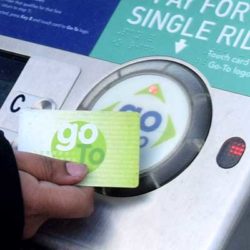
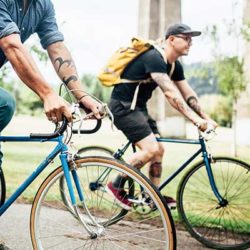
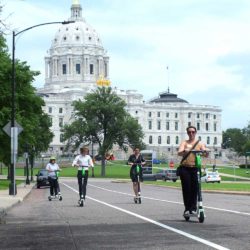
Keep exploring! Learn more about getting around Saint Paul by bus, train, bike, scooter, and more.
Being able to use public transit—and being able to be a one-car family—is one of the main reasons we moved to the Twin Cities.
Stephanie L.
Ready to get biking?
Saint Paul has over 180 miles of bike-friendly routes that connect local neighborhoods and key destinations. Committed to encouraging bicycle use as part of everyday life, the City continues to add new bike lanes, paths, and protected bikeways for more people to use and enjoy.
What about your boss?
Do you wish your employer or your building owner was more supportive of transit, bicycling, walking, and rolling?
If you are based in Saint Paul, reach out! Move Minnesota partners with properties and workplaces of all sizes to encourage sustainable transportation, reduce air pollution, and curb car traffic in our capital city. We love helping organizations large and small realize the many benefits of rethinking the commute.
Not loving your options?
Move Minnesota connects people to transit choices where the system works well, and fights hard to ensure it works for everyone. Help us improve transit, bicycling, and walking in the Twin Cities.
Related News & Updates
-
Finding Art, Community, and Transportation Choices in Saint Paul’s Creative Enterprise Zone
Move Minnesota partnered with Saint Paul’s Creative Enterprise Zone to help lead bike tours of new murals that contribute to the beauty, economic vitality, and walkability of the area.
-
With Better Infrastructure, the Twin Cities Gets Biking
With better bike infrastructure popping up across the Twin Cities, now is a great time to start pedaling – there are community activities, and lots of bike-friendly destinations to explore.
-
Temporarily Transformed Public Spaces in Saint Paul Present Opportunity for Rethinking Streets
Saint Paul is making progress in rethinking street design with temporary permitted uses during COVID-19. These changes present opportunity for permanent transformations in the city.
Explore Other Initiatives
We’re building coalitions, engaging communities, organizing with
advocates, and more.
-
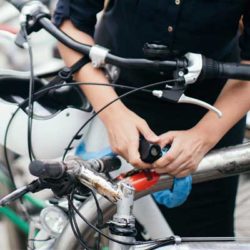
Expanding Bike Parking in Saint Paul
Saint Paul needs more bike parking. Move Minnesota works collaboratively to expand bike parking throughout the city.
-

Saint Paul Employers and Properties
Move Minnesota helps employers and developers provide cost-effective, sustainable transportation to the people and places that make your business run.
-
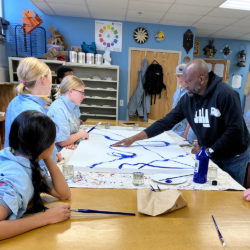
Changing the School Commute
Move Minnesota is helping create the next generation of confident public transit riders through our work with high school students in the Twin Cities.
